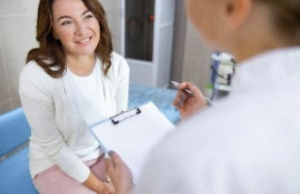 Physical assessment can provide insight to a patient’s health and nutritional status that may not otherwise be discovered without more expensive and time-consuming testing. Whether part of a composite nutrition score like in the Subjective Global Assessment (SGA) or on its own as a full Nutrition-Focused Physical Exam, the physical assessment is getting more attention and has become a trending topic in the RDN community.
Physical assessment can provide insight to a patient’s health and nutritional status that may not otherwise be discovered without more expensive and time-consuming testing. Whether part of a composite nutrition score like in the Subjective Global Assessment (SGA) or on its own as a full Nutrition-Focused Physical Exam, the physical assessment is getting more attention and has become a trending topic in the RDN community.
Despite a wealth of research showing both reliability and validity of performing physical exams and support from institutions like the National Kidney Foundation and the Academy of Nutrition and Dietetics, many dietitians remain hesitant to routinely get hands-on in their practice.
Messenger et al. published a paper in 2020 detailing renal dietitians’ experience and opinions regarding the 7-Point SGA. They identified the hands-on physical exam section of the assessment as one of the major barriers to incorporating it’s use into regular practice, indicating RDNs are not confident in their physical assessment skills. So, the question is, how do we gain confidence with this or any other new skill?
Harkening back to the days of our dietetic internships, the key always seems to be practice. Building confidence in your clinical judgment, selection of appropriate nutrition supplementation, complex calculations to determine energy needs, and so on, came directly from repeated practice. The relatively easy part was that so much of the practice came before ever working directly with a patient. We could turn to our books, read through case studies, practice calculation after calculation, and discuss concepts with our peers and professors.
Some skills, like the physical assessment and motivational interviewing – which will be explored further in February’s webinar – require more than just books, papers, and pens to gain experience. Building the skill of performing a physical exam requires real time physical practice.
Asking colleagues, friends, and/or family to allow you to perform a nutrition-focused physical exam is a great way to get started. If you’re not quite ready to get hands-on, you can start with the verbal explanation of a physical exam, talking someone through what to expect including how long it will take and what areas of the body you will look at; and build from there. Then repeat, often, until you feel confident enough to use it in practice with your patients.
Studies have found that RDN’s performing physical assessments on the same patient tend to agree or match assessments 70-80% of the time, meaning despite your doubts, you’re probably getting it right.

The physical assessment is a powerful tool and integrating it into your clinical practice can bring great value to your assessment skills, clinical recommendations, and patient outcomes. Happy practicing!
For more information on the 7-Point SGA and conducting a Physical Exam, check out our webinar and the following links:
References
Cooper, B. A., Bartlett, L. H., Aslani, A., Allen, B. J., Ibels, L. S., & Pollock, C. A. (2002). Validity of subjective global assessment as a nutritional marker in end-stage renal disease. American journal of kidney diseases, 40(1), 126-132
Sum, S. S. M., Marcus, A. F., Blair, D., Olejnik, L. A., Cao, J., Parrott, J. S., … & Byham-Gray, L. D. (2017). Comparison of subjective global assessment and protein energy wasting score to nutrition evaluations conducted by registered dietitian nutritionists in identifying protein energy wasting risk in maintenance hemodialysis patients. Journal of Renal Nutrition, 27(5), 325-332
Lim, S. L., Lin, X. H., & Daniels, L. (2016). Seven‐Point Subjective Global Assessment Is More Time Sensitive Than Conventional Subjective Global Assessment in Detecting Nutrition Changes. Journal of Parenteral and Enteral Nutrition, 40(7), 966-972
Messenger, S., Bainbridge, L., & DaSilva, L. (2020). Renal dietitians’ perceptions of the value of subjective global assessment: a mixed methods study. Journal of Renal Nutrition, 30(2), e5-e13.
Litchford, M. (2020, December 17). NUTRITION-FOCUSED PHYSICAL EXAM – PART 1: SUBCUTANEOUS FAT AND MUSCLE LOSS. Lecture presented at NUTRITION-FOCUSED PHYSICAL EXAM – PART 1: SUBCUTANEOUS FAT AND MUSCLE LOSS.
